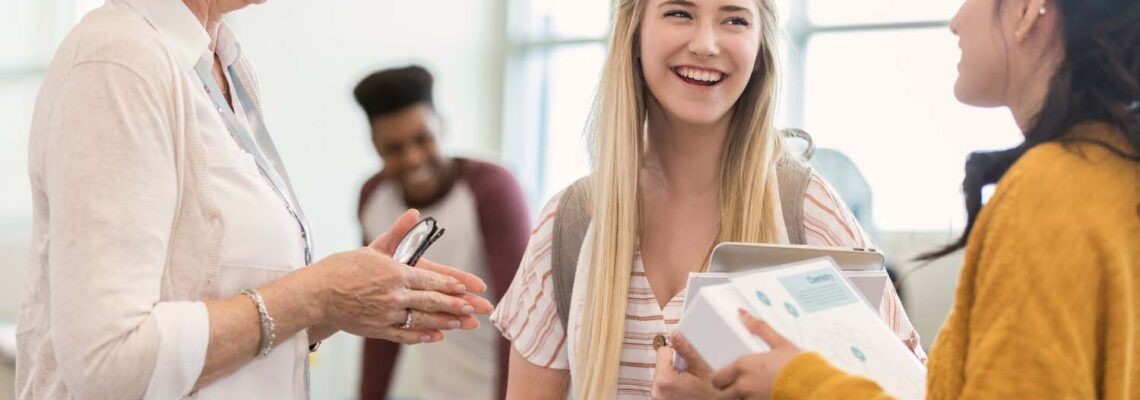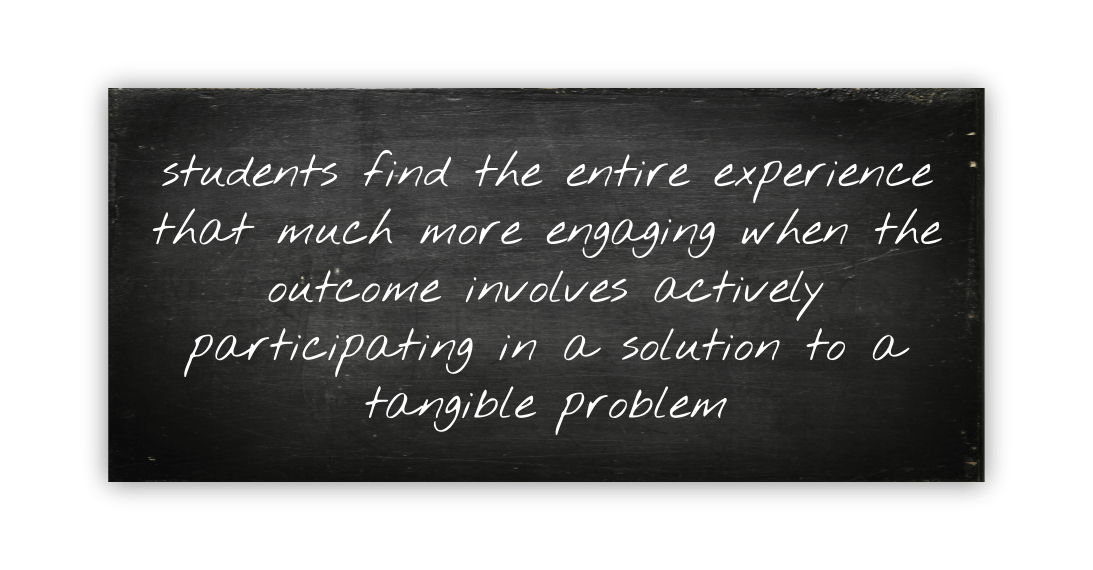
You heard Carrie Moeggenberg on our Transforming Learning podcast talk about community engagement in Ludington Area Schools (that econ class example was awesome!). But social studies aside, many find it difficult to connect what they are learning about with the community at large.
Based on conversations with innovative educators like Carrie Moeggenberg, I want to share a few tips to help you and your students find ways to take the learning into the community.
#1. Start with a problem
The single most compelling reason anyone wants to do anything for anyone else is the answer to “What’s in it for me.” Despite my belief that local businesses and community members generally love the idea of connecting with schools and students, I have worked with teachers recently who get a lot of “no thanks” when reaching out.
Similarly, students find the entire experience that much more engaging when the outcome involves actively participating in a solution to a tangible problem. Therefore, for all parties involved, identifying a problem and seeking ways to help solve it makes all the difference.
In most cases, though, this works best if all stakeholders have a voice in the entire experience. That brings up #2.
#2. Chamber of Commerce, or something
Carrie suggested in the podcast episode I mentioned above that she started the process by reaching out to her local Chamber of Commerce. I have now spoken with teachers from several districts this year who, after significant roadblocks, attempted the same thing with great success.
Why Chamber of Commerce? Because they know the people. They know who is who and what is what in your community and can help you get in touch. That’s often the hardest part.
And there are other similar organizations, local entities, etc. that fit this bill (rotary, small business groups, and such).
#3. Ask more from your students
I’m going to do an exercise of “walk a mile in my shoes.” I am a student again, considering an upcoming project in class. Teacher tells me that we are going to help some local businesses identify and solve a certain problem in certain ways. Teacher tells me that it fits well with our curriculum because of these several reasons and lessons and concepts. Teacher tells me we will produce this particular kind of artifact to capture and share the experience as well as reflect on the process.
All of that sounds quite interesting to me! But at no point have I made any significant decisions or planted any significant stakes of my own in the process. If I am a compliant student, I will participate well and enjoy much of it. If I am not, good luck getting me to find this as anything more than a bunch of extra work.
Change the situation.
Instead, the teacher tells me we are going to engage with our community in some way and asks me to look at the topics we hope to study and consider how those ideas might fit with problems in my world today. While we are considering that, the teacher asks us to think of others in the community who might be able and have some kind of interest in also addressing the problem. Then the teacher asks me to contact those individuals/entities and propose my idea about trying to collaborate on a problem and solution.
During the process, the teacher asks me to find connections between our situation and our content/topics of study. As a class, we regularly discuss (1) connections we are finding and (2) gaps in the experience (things that are missing from our knowledge, skills, resources, etc.). The teacher asks us to consider how we can capture the experience to share later. The teacher also asks us to consider how we can publicize our efforts so that the rest of our community sees and understands (and potentially partners with) our goals.
One of these above will capture significantly more students’ interest and result in significantly higher effort.
And when they push back (as they always do) that they would rather you just tell them what to do, learn, and think, remind them (in a gentler way than this) that in this class, we do things that matter.

